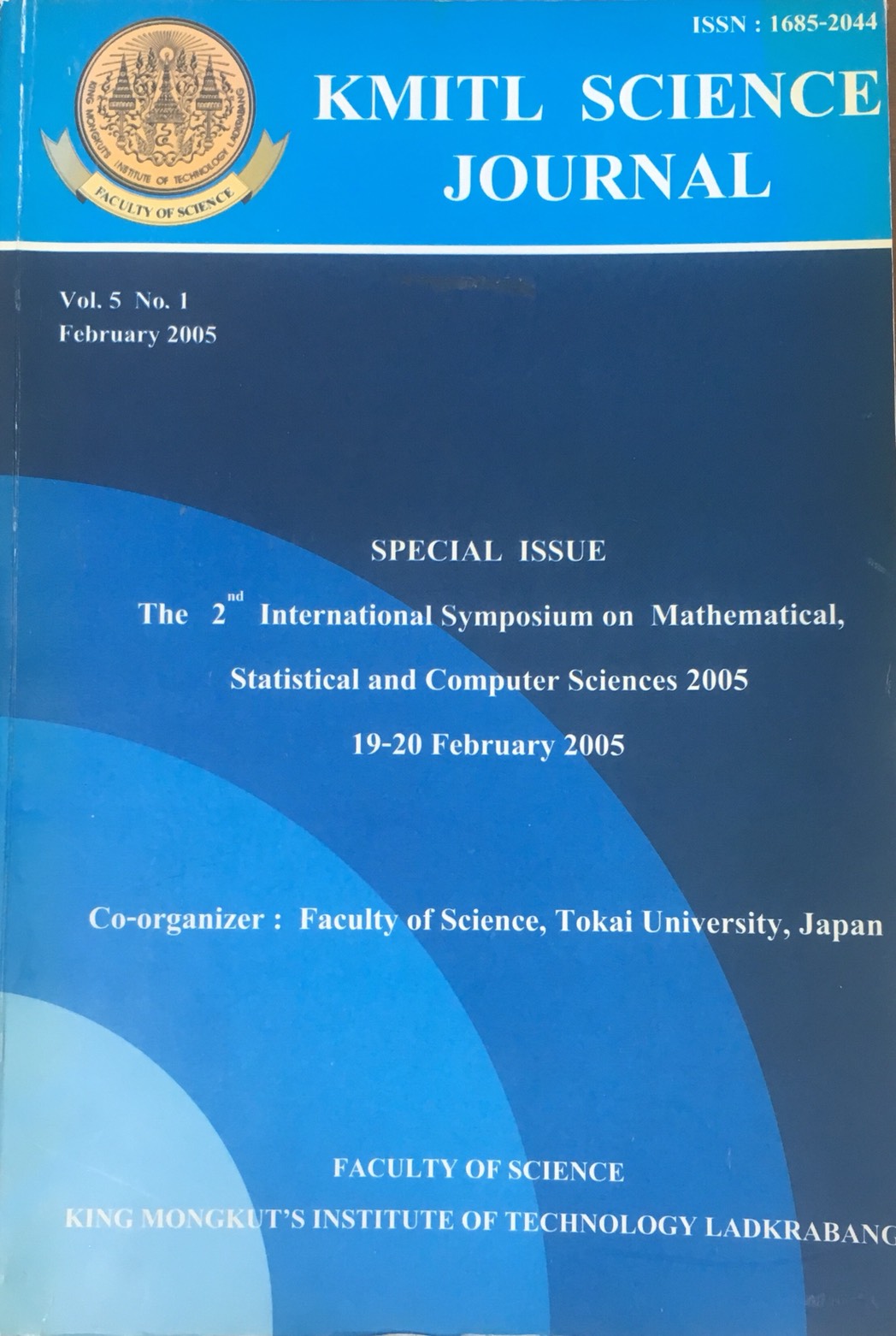The Modified Basis Function Method for Time-Varying Frequency Estimation
Main Article Content
Abstract
A modified version of the basis function method, called the modified basis function method, is proposed for estimating time-varying frequency of nonstationary signals. The modification is accomplished by adjusting a TVAR process, used as a linear predictor, and applying a combination of both the forward and the backward predictors for calculating TVAR parameters. The time-varying frequency estimate was extracted from location of the closet pole to the unit circle in the complex z-plane. Two nonstationary signals, one is chirp and another is of sinusoidally time-
varying frequency, are used as examples. From our results, the proposed approach yielded better accuracy in estimating the time-varying frequency in either noisy or noise-free situation than using the traditional basis function method.
Keywords: Time-varying autoregressive, Modified Basic function method, Nonstationary signal, Frequency estimation
Corresponding author: E-mail: sodsri@su.ac.th
Article Details
Copyright Transfer Statement
The copyright of this article is transferred to Current Applied Science and Technology journal with effect if and when the article is accepted for publication. The copyright transfer covers the exclusive right to reproduce and distribute the article, including reprints, translations, photographic reproductions, electronic form (offline, online) or any other reproductions of similar nature.
The author warrants that this contribution is original and that he/she has full power to make this grant. The author signs for and accepts responsibility for releasing this material on behalf of any and all co-authors.
Here is the link for download: Copyright transfer form.pdf
References
[2] Eom, K.B., 1999 Analysis of Acoustic Signatures from Moving Vehicles Using Time-Varying Autogressive Models, Multisignal Systems and Signal Processing, 10, pp 357-378.
[3] Hall, M.G., Oppenheim, A.V. and Willsky, A.S., 1983 Time Varying Parametric Modeling of Speech, Signal Processing, 5, pp 267-285.
[4] Beex, A.A and Shan, P., 1999 A time-varying Prony Method for Instantaneous Frequency Estimation at Low Frequency, Proceeding of the 1999 IEEE International Symphosium on Circuits and Systems, 3, pp. 5-8.
[5] Neidzwiecki, M., 2000 Identification of Time-varying Processes, John Wiley & Sons, Chicester, England.


